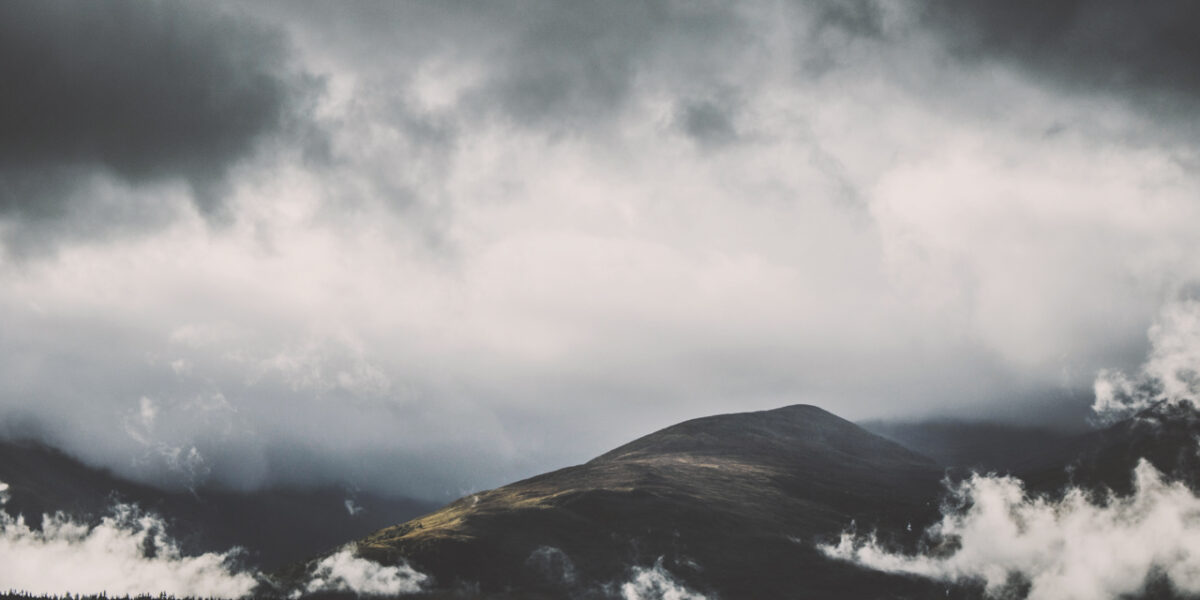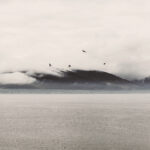From the late 1800s, climbers have been reporting encounters with Am Fear Liath Mor, a tall Yeti-esque monster that stalks those descending from the summit of Ben Macdui, the highest mountain in the Cairngorms and the second highest mountain in Scotland.
At the 1925 meeting of the Cairngorm Club, respected mountaineer and scientist John Norman Collie spoke of an experience he’d had on Ben Macdui in 1890, one that had scared him so thoroughly that he hadn’t spoken of it for thirty-five years.
“I was returning from the cairn on the summit in a mist when I began to think I heard something else than merely the noise of my own footsteps. Every few steps I took, I heard a crunch and then another crunch, as if someone was walking after me but taking steps three or four times the length of my own. I said to myself, this is all nonsense. I listened and heard it again but could see nothing in the mist. As I walked on and the eerie crunch, crunch sounded behind me I was seized with terror and took to my heels, staggering blindly among the boulders for four or five miles nearly down to Rothiemurchus forest. Whatever you make of it I do not know, but there is something very queer about the top of Ben Macdui and I will not go back there again myself.”
Over the next twenty-two years until his death, Collie received several letters from fellow climbers who’d had their own terrifying experiences on the slopes of Ben Macdui but were previously too embarrassed to recount them to anyone. By the time Alexander Borthwick’s book, Always A Little Further, was published in 1939, the creature had become known as Am Fear Liath Mor – literally, the Big Grey Man. Borthwick recounted the experiences of two of his fellow climbers:
“The first was alone, heading over MacDui on a night when the snow had a hard, crisp crust through which his boots broke at every step. He reached the summit and it was while he was descending the slopes which fall towards the Larig that he heard footsteps behind him, footsteps not in the rhythm of his own, but occurring only once for every three steps he took.
“I felt a queer crinkly feeling in the back of my neck,” he told me, “but I said to myself, ‘This is silly, there must be a reason for it.’ So I stopped, and the footsteps stopped, and I sat down and tried to reason it out. I could see nothing. There was a moon about somewhere, but the mist was fairly thick. The only thing I could make of it was that when my boots broke through the snow-crust they made some sort of echo. But then every step should have echoed, and not just this regular one-in-three. I was scared stiff. I got up, and walked on, trying hard not to look behind me. I got down all right – the footsteps stopped a thousand feet above the Larig – and I didn’t run. But if anything had so much as said ‘Boo!’ behind me, I’d have been down like a streak of lightning!”
The second man’s experience was roughly similar. He was on MacDui, and alone. He heard footsteps. He was climbing in daylight, in summer, but so dense was the mist that he was working by compass, and visibility was almost as poor as it would have been at night. The footsteps he heard were made by something or someone trudging up the fine screes which decorate the upper parts of the mountain, a thing not extraordinary in itself, though the steps were only a few yards behind him, but exceedingly odd when the mist suddenly cleared and he could see no living thing on the mountain, at that point devoid of cover of any kind.
“Did the steps follow yours exactly?” I asked him. “No,” he said. “That was the funny thing. They didn’t. They were regular all right; but the queer thing was that they seemed to come once for every two and a half steps I took.” He thought it queerer still when I told him the other man’s story. You see, he was long-legged and six feet tall, and the first man was only five-feet-seven.
Once I was out with a search-party on MacDui, and on the way down after an unsuccessful day I asked some of the gamekeepers and stalkers who were with us what they though of it all. They worked on MacDui, so they should know. Had they seen Ferlas Mor? Did he exist, or was it just a silly story? They looked at me for a few seconds, and then one said: “We do not talk about that.”
In the majority of cases, Am Fear Liath Mor is only heard or sensed and not seen. The climbers who felt its presence almost always reported an unprovoked feeling of acute terror and overwhelming panic, in some cases becoming so intense that it lead to suicidal thoughts. This extreme sense of despair has also been reported in sightings of Bigfoot and the Sasquatch in North America.
In 1958, Alexander Tewnion wrote in The Scots magazine about what he described as the strangest experience of his life:
“In October 1943 I spent a ten day leave climbing alone in the Cairngorms. One afternoon, just as I reached the summit cairn of Ben MacDui, mist swirled across the Lairig Ghru and enveloped the mountain. The atmosphere became dark and oppressive, a fierce, bitter wind whisked among the boulders, and… an odd sound echoed through the mist – a loud footstep, it seemed. Then another, and another. A strange shape loomed up, receded, came charging at me! Without hesitation I whipped out the revolver and fired three times at the figure. When it still came on I turned and hared down the path, reaching Glen Derry in a time that I have never bettered. You may ask was it really the Fear Liath Mor? Frankly, I think it was.”
Several climbers claim to have actually seen Am Fear Liath Mor in the mists of Ben Macdui, with descriptions ranging from the vague ‘large dark shape’ to a creature standing more than ten feet tall and covered in dark grey fur, with broad shoulders and long waving arms. One explanation for the sightings, aside from a hefty dose of imagination, is the Brocken Spectre, an atmospheric phenomenon that occurs when the sun casts the shadow of the observer on low hanging clouds or mist, and magnifies it into an enormous, dark shape.
The Brocken Spectre was certainly the cause of one of the oldest recorded ‘encounters’ on Ben MacDui in 1791, when the poet James Hogg saw “…a giant figure, at least thirty feet high, and equally proportioned, and very near me. I was actually struck powerless with astonishment and terror.” Hogg fled the mountain but was forced to return the next day to collect the sheep he had been tending there, and when he did, the monster returned. When he noticed that the huge beast was mirroring his movements, he removed his hat and observed the figure doing the same. Hogg concluded that what he saw was simply his own shadow in the fog.






Tarkabarka says:
So, here is the question: If we assumed that there is a mythical creature in the mountains, I wonder, what creature of Scottish (Celtic) mythology would it really be?… 😀
@TarkabarkaHolgy from
Multicolored Diary – Epics from A to Z
MopDog – 26 Ways to Die in Medieval Hungary
April 8, 2015 — 1:40 pm